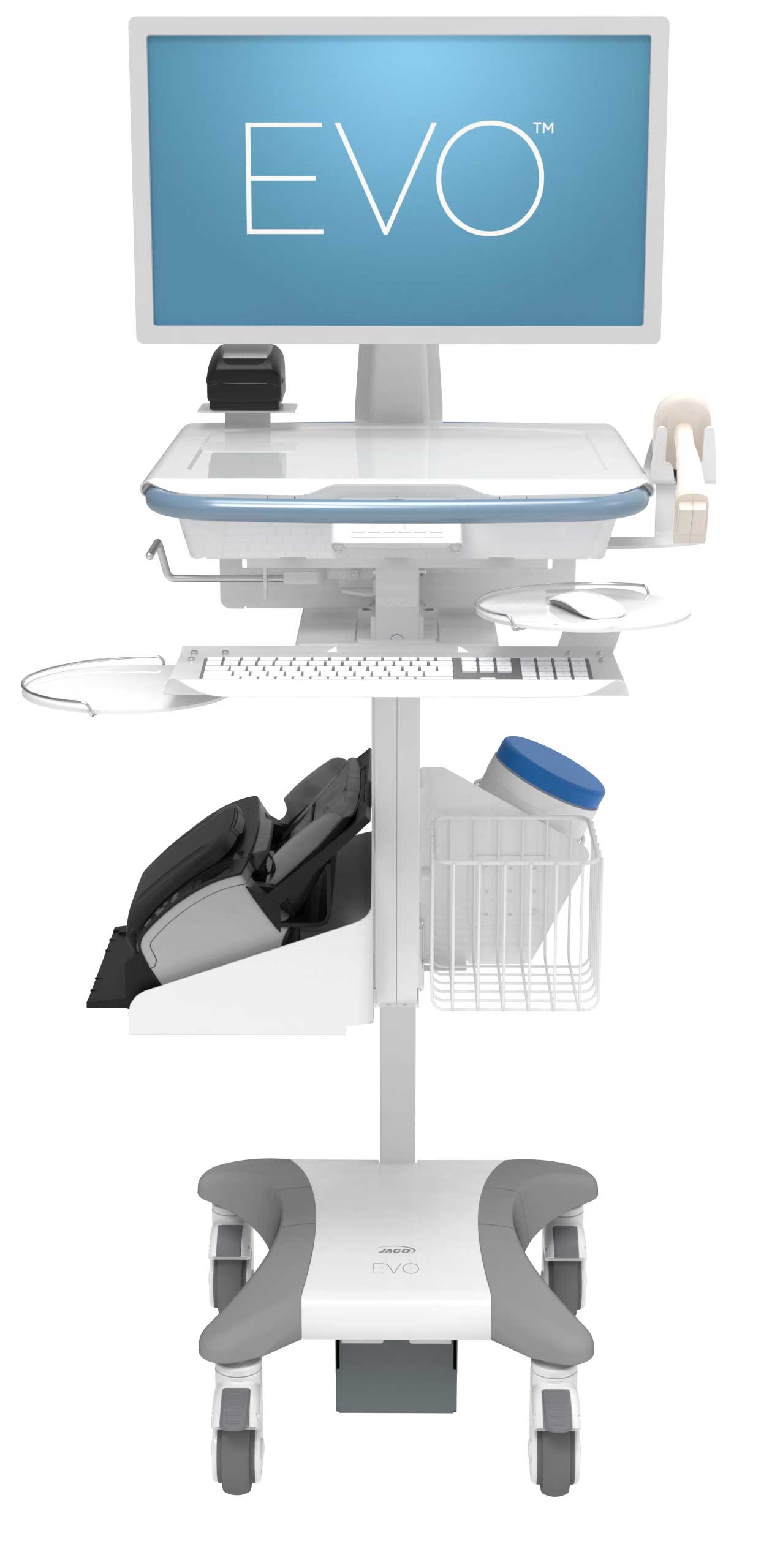If you’re a hospital or healthcare facility unit manager, you know that securing funding for new equipment can be like pulling teeth. Hospitals and other healthcare facilities’ budgets are already stretched thinner than anyone thought possible due to soaring healthcare costs and the ongoing pandemic.
As of January 2022, hospital margins and volumes remained lower than 2019 levels and in the red without CARES aid. Increased revenues have been offset by rising expenses driven by staffing shortages and labor demand, supply chain issues and near-record inflation. Healthcare budgets are further strained by an unprecedented demand for telehealth services and heightened cybersecurity needs.
Now more than ever, any requests for new equipment must be well researched before a purchase proposal is put together for an administrator or finance committee. But by doing your homework, and some careful strategizing and collaboration with other stakeholders in your facility, you can significantly improve your chances of having your proposal for new equipment approved.
Understand the dynamics of purchase approvals at your hospital
As a nurse or unit manager you face several challenges to winning approval for different lines of your nursing budget. Understanding how various stakeholders and organizational dynamics affect the operations in your facility, the overall budget, and your unit’s needs can go a long way towards reducing your frustration and helping you get the equipment and medical supplies you need for your patients and staff.
1. Know the stakeholders
Getting a picture of how the capital budget in your facility is affected by different stakeholders and departments will help you have a better understanding of the various budget demands and priorities—and how likely your purchase request is to be approved. Stakeholders to consider include:
- Board of Directors
- Physicians
- Administrator
- Accounting department
- Finance department
- Purchasing department or groups
- IT services
- Chief nursing officer and other nursing leaders
- Other departments and their managers in charge
Also, consider the timing of new hires, new member appointments to financial committees, or a new head of finance or accounting when preparing your purchase requests. It’s not uncommon for people in these positions to have different priorities for the budget than their predecessors – or to postpone any budget decisions until they get comfortable in their new role and thoroughly review financial details with the key stakeholders.
2. Know the ground rules
There are typically certain times of the fiscal year when budgets are reviewed and approved. This may mean you’ll need to have your equipment purchases planned out months in advance; otherwise, you may have to wait until the following year to get approval which can be frustrating for you and your staff.
It’s also important to use the money that has been allocated to your budget each year. Otherwise, you risk losing that money from your budget the following year because it appears that you don’t need it. Allocate every dollar in your budget to resources that your unit needs. It’s also a good idea to have a contingency plan for how to spend that money in case what you had it earmarked for as a first choice is not approved.
3. Learn from experience – good and bad
If you’re new to your unit or facility, have a conversation with the outgoing unit manager about the budget for your unit. Ask about any politics, pitfalls, and “sore spots” you should be aware of with those you’ll be reporting to and working with on the budget when you take over the reins.
Also, be sure to ask if they’re working with any vendors, if they have a good relationship with them, and if the vendors have good relationships with others in the facility. This can significantly impact whether equipment from certain vendors will be approved.
Questions to ask include:
- Have the vendors been easy to deal with before, during, and after a purchase?
- Have the vendors been responsive to the unit manager’s questions and needs?
- Has the vendor’s medical equipment held up to the standards they said the equipment had, and does the equipment work as well as and like they said it would?
- Does your staff have any feedback about the equipment, both positive and negative?
- Does the equipment you currently have meet the needs of the unit?
- Does the current equipment usually work well, or is it prone to breaking down and requiring servicing?
- Is servicing and maintenance of current equipment done in a timely way, so the equipment is back in service again quickly?
- Does the staff find the equipment easy to work with, clean, and store?
- What are the service and maintenance costs for current equipment on the unit? Are these costs considered reasonable or excessive by your accounting department and other financial decision-makers?
- Have there been any patient or staff safety incidents with the current equipment on the unit? If so, find out the details.
- Be sure to ask for any “tips” the outgoing manager has found helpful for getting their purchase requests approved.
4. Know what other departments are asking for
Frances Charlton, MBA, MHA, RN, NE-BC, who has almost 20 years experience in administrative roles in various hospitals and medical facilities, points out, “The majority of the time purchasing decisions are prompted by requests, usually from our physicians, who are always looking at the cutting edge of technology.”
These purchases are typically given higher priority compared to other purchase requests. Knowing what other major acquisitions are coming down the “pipeline” in your facility, such as hospital beds, can help you identify when your request may complement or be a good fit for other purchases already approved or when it may be a conflict.
When preparing your purchase proposal, consider if there is some way your purchase can help address the budget concerns in another department.
5. Know the most common roadblocks – and how to overcome them
Year after year, the “biggest hurdle” that physicians and purchasing managers face when attempting to get approval for large-scale equipment purchases is being able to demonstrate the equipment’s usefulness and long-term value.
Other non-cost associated barriers included:
- Having to assure hospital purchasers that new equipment and medical devices are “compatible across facilities to standardize care.”
- Providing training and tech support to minimize staff burden
- Finding physical space for the new equipment
As a unit manager, you’ll face these hurdles as well. Be sure you’ve addressed each of these concerns in detail in your proposal to increase your chances of having it approved.
How to get purchase requests approved
Once you’ve learned all you can about your biggest challenges and how to address them, you can further improve the chances of having your request or proposal approved by following these tips.
Demonstrate why you need it, and why now.
If you want to buy new equipment, why do you think this equipment is needed now and not later? Be prepared to answer these questions:
Will your new equipment meet a critical patient or staff need that current equipment doesn’t?
Will it improve clinical outcomes?
Will it replace equipment that poses a safety risk?
Will it support a key hospital strategic initiative or investment?
Will it reduce or eliminate ongoing costs of current equipment? When you answer this question, be sure to factor in all associated costs for existing and new equipment you want to buy, such as
- Servicing and maintenance
- Price & availability of replacement parts
- Equipment downtime when it’s not available for use
- IT integration and support
- Shipping/receiving/setup of new equipment
- Equipment training for new staff
- Disposal or recycling of worn-out or defective equipment and batteries
Show how it relieves budget pain points
To increase the likelihood that your equipment purchase is approved, it’s important to put yourself in the shoes of your administrator or finance committee members.
There are seven budget areas that purchasers find most difficult to manage:
- Surgical/OR needs
- Laboratory services
- Service contracts, equipment maintenance, leasing
- Cardiology needs
- Medical implants & prosthetics
- Interventional procedures & radiology needs
- Emergency procedures & ED needs
To get your purchase approved, you need to figure out how to make it easier for decision-makers to say “yes!” to your request by showing them how your purchase addresses these issues.
If there is an option to lease the equipment instead of buy it outright, explore the details of each option. Keep in mind the seven pain point areas of the budget above, and provide a detailed explanation in your proposal why one option would be better for budgetary reasons than the other.
By addressing how your purchase will help reduce or minimize these costs in the long run, you’ll increase the likelihood of your proposal being approved, and demonstrate that you have a good financial understanding of what’s important to the financial decision-makers you report to – proof that you’re acting responsibly regarding your purchase requests as part of the leadership team.
Show how it improves the patient experience
According to InCrowd, the most influential factors on purchasing decisions include product quality, number of patients benefiting, and cost/coverage of the product. Compatibility with current products and role of the product within the hospital are also highly ranked by respondents.”
Knowing this, be sure to collect and include as many details as possible about the new product’s quality, durability, and expected longevity. Also, be sure to have staff keep track of how many patients they would use the equipment with daily, weekly, monthly, and yearly. Include both pieces of data above in your purchase proposal since they are key criteria decision-makers will likely use to review your purchase request.
With patient experience and customer satisfaction more important to providers than ever before, purchases that contribute to these outcomes will more likely be approved than others.
Collaborate wherever you can
Finally, never underestimate the power of collaboration in meeting the needs of many stakeholders.
For example, if you and your staff have identified problems with equipment on your unit and you want to replace it, you can be sure these problems are occurring on other units and in other departments that use this equipment as well. Reach out to the managers in the Surgery/OR, Laboratory Services, and Cardiology departments (the top 1, 2, and 4 budget areas most difficult to manage above) to see if they’re using the same equipment and having problems with it too. They’ll be glad to hear they’re not alone.
Having this conversation will give you the opportunity to ask if they’re planning to replace this equipment as well. And you can ask if they would like to work together on a proposal to increase the likelihood that both of your concerns will be heard and addressed. The more people who are having issues with equipment in a facility, the more of a concern and “red flag” it will be for those in decision-making positions— especially if patient or staff safety incidents or near-misses are occurring.
Having multiple ‘squeaky wheels’ can elevate the need to replace troublesome or outdated equipment across units and make it a higher priority in the eyes of those holding the purse strings than it may have been for your unit alone.
By understanding the interrelated factors that affect capital equipment purchases and budget considerations, as well as the pain points of the financial decision-makers, you can significantly increase your chances of having your purchase requests approved.

Leona Werezak MN, BSN, RN is a freelance nurse writer. She has worked as a nurse in a variety of positions at the bedside for 13 years and as a nurse manager. From there, she began teaching nursing in BSN programs for the next 20 years. As a freelance nurse writer, she now writes online content for healthcare and medical businesses, nursing schools and colleges, as well as various nursing sites.






